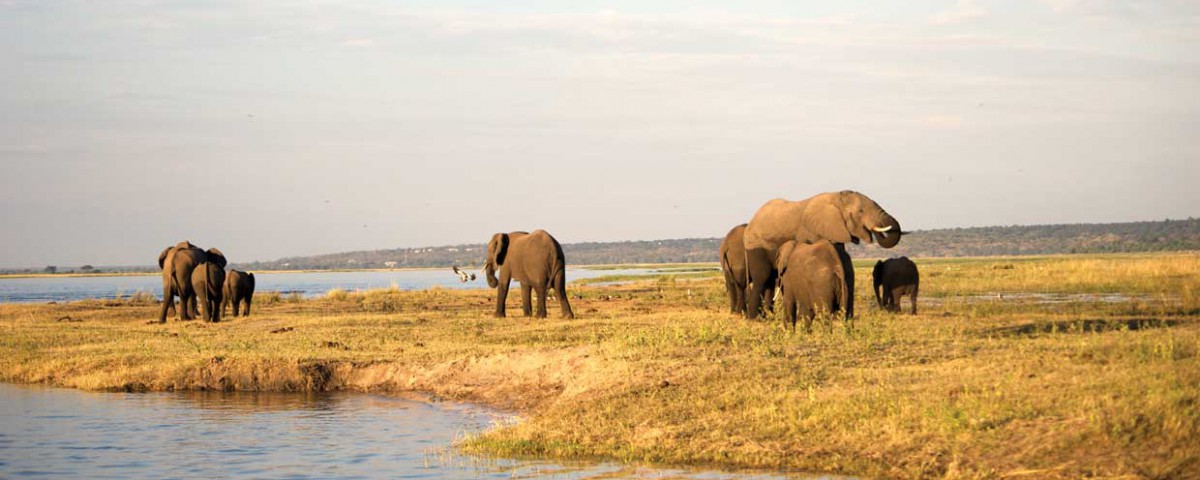
Leopards and farmers
April 20, 2016
Suddenly as dusk was falling
April 20, 2016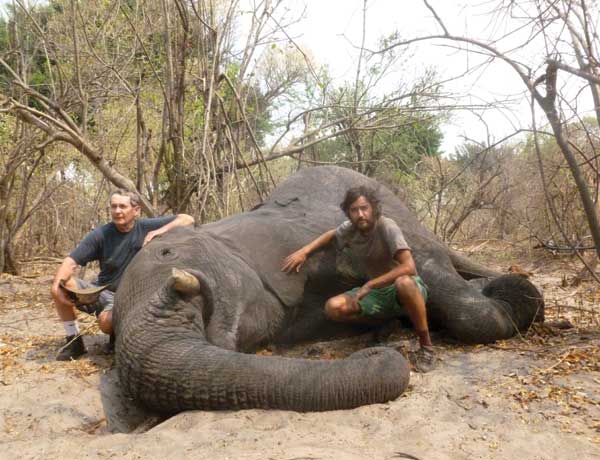
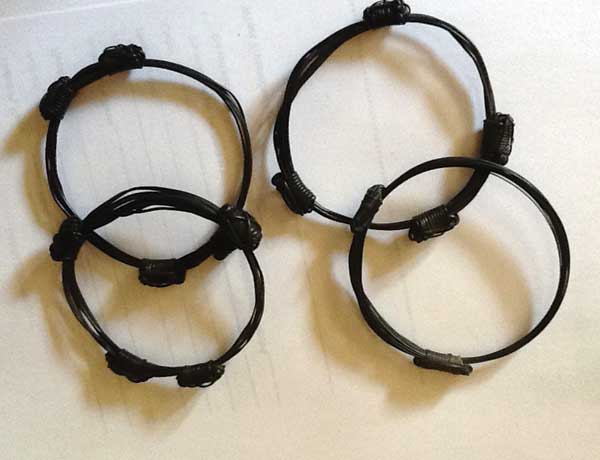
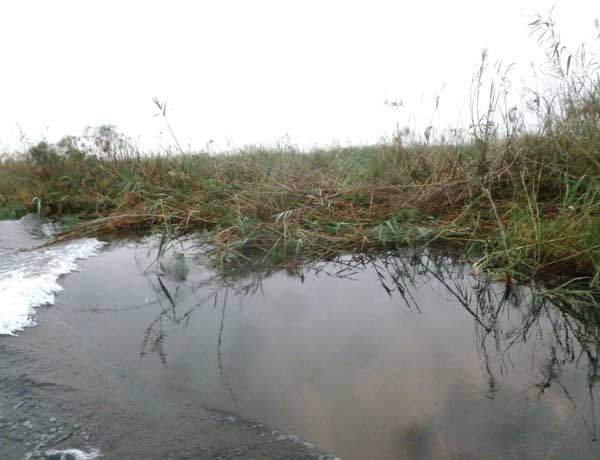
Trampled reeds on the Kwando River
The hunters were not looking for a ‘trophy’ bull, but for what is termed an ‘own-use’ elephant, as part of the Conservancy’s wildlife quota granted by the Namibian Ministry of Environment and Tourism. ‘Own-use’ elephants are considerably cheaper than those purchased as ‘trophies’, and the hunter is not permitted to take any part of the animal. Typically, old elephant bulls which would never be considered ‘tuskers’ (i.e. those with short or broken tusks) are hunted for own-use purposes, the meat being distributed among villagers. Theoretically, then, the task is simpler, but after walking for an hour we had yet to see an elephant. There was dung, spoor and ravaged vegetation everywhere, but the pachyderms were no longer on the island. The hunters reckoned that the elephants had crossed back into Bwabwata National Park or were feeding on a different island.
Back in the boat we navigated a maze of narrow tributaries – reeds arching above our heads at either side – before reaching another small island. Here, a dilapidated wooden structure, surrounded by the bones of dead animals, represented the remains of what was once a hunting camp. Leo, Jackie and JG inspected the skull of an elephant, fascinated by its biology. Judging by the size of its molars it seemed that this had been a relatively young animal. Yet its living relatives continued to elude us, so we headed back to the boat. We would return to the islands that evening, and so, too, would the elephants, the group hoped.
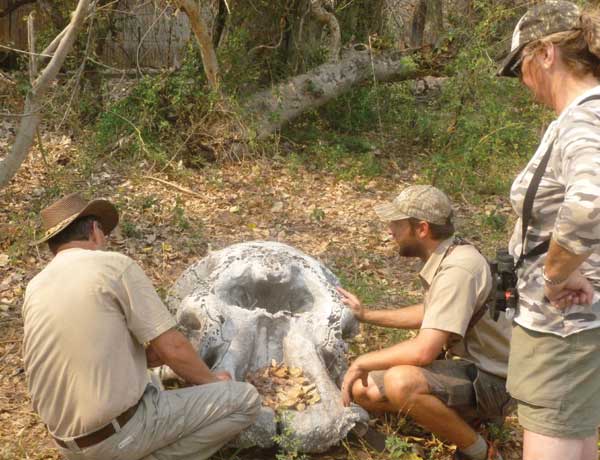
Leo, JG and Jackie inspect an elephant skull
Later, as day turned into night on Lechwe Island, we still had not seen elephants. Covering much of the same ground as earlier, the results had been no different. Hoping to catch a glimpse of elephants from the water, the hunters decided to board the boat again. Travelling upriver, it wasn’t long before Schalk caught sight of something moving in the reeds ahead. JG turned off the engine and we floated further upstream. To our left was an elephant feeding among the reeds, unperturbed by the boat full of people that had pulled up alongside. Further along the channel yet more elephants gorged themselves on the reeds. We sat and watched, transfixed, cameras clicking. On land the elephants would have been far more anxious, and we could never have gotten so close. “They feel safe in the water” said JG, and indeed they were. “They are crossing from the park” said Schalk. “We’ll get them in the morning.”
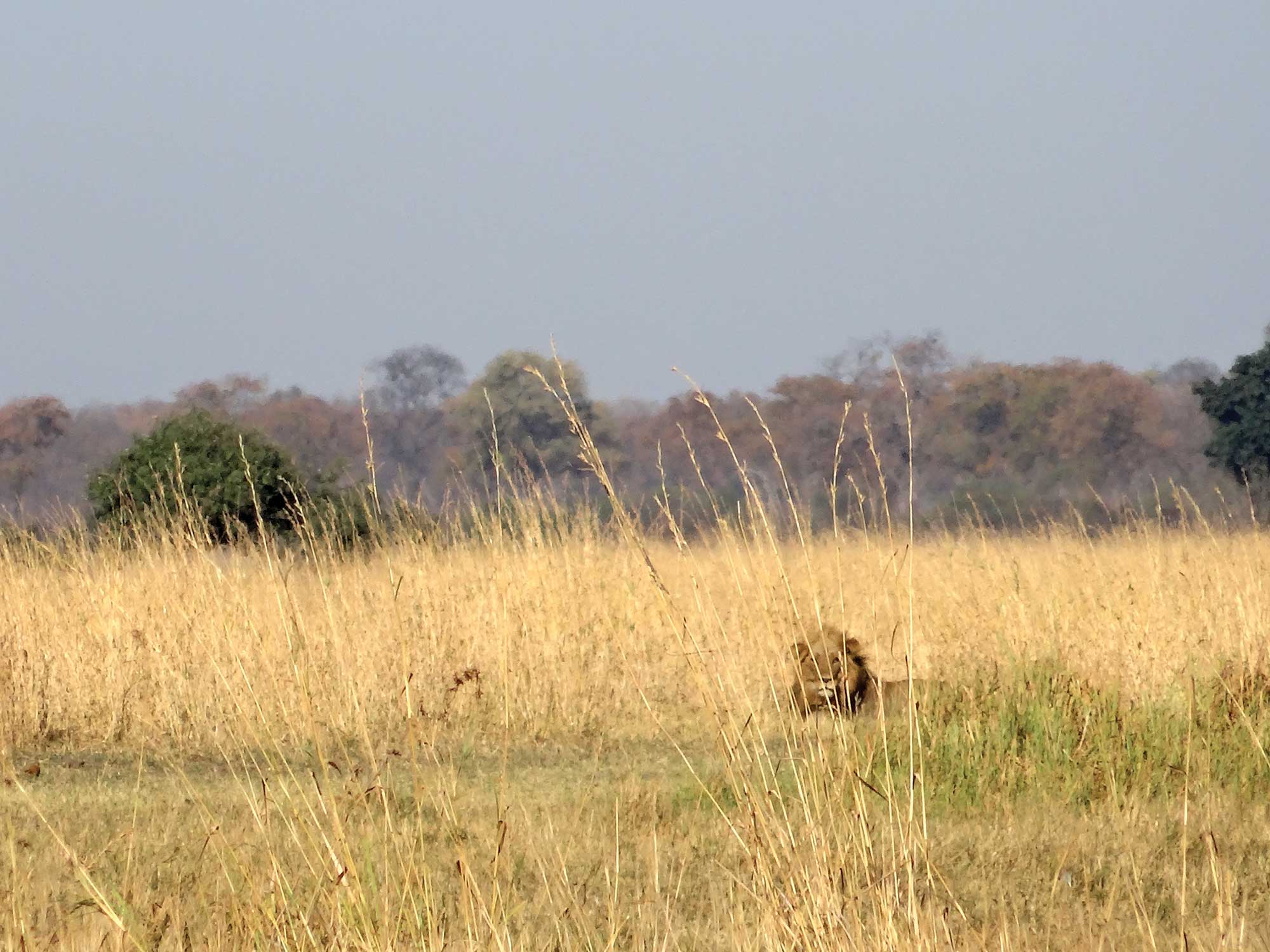
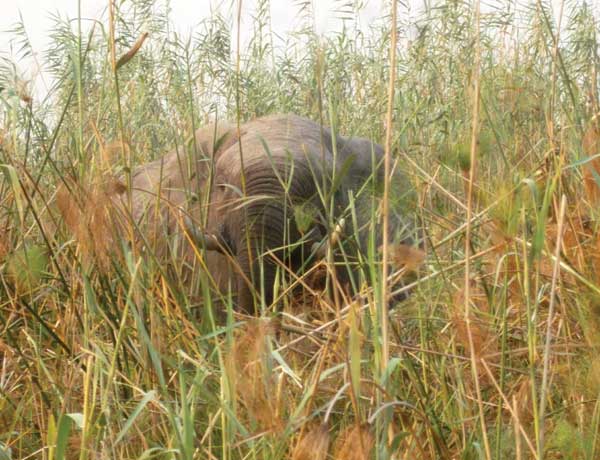
An elephant among the reeds in Mayuni Conservancy
“What a majestic animal”, said Jackie, standing next to the elephant. The animal lay on its side, lifeless in the sweltering sun. That morning, just as they had done for the past few days, the hunters travelled downriver to the islands in Mayuni Conservancy. “I wasn’t super confident but on the way in, golly, we saw a lot of elephants”, Leo told me. “And it was pretty obvious that they were not crossing the river as early as they should have, could have. So there was a good chance we were going to find elephants here on this island.” On land, the group had come across a herd of elephants yet to make their way back to the park. Among them, the hunters had targeted an ideal bull with a broken tusk. “Picking a bull out of a mixed herd like that is something people try to avoid, because the cows can be downright miserable”, explained Leo. “I started to get anxious. You’re getting down to making final decisions and it becomes very serious, almost business-like”, he confessed.
We walked to a pile of tree stumps fifty yards away, from where Leo had taken the shot. “One of them mock-charged us!” said Schalk, “and Risco and Frank ran away into the bush!” They all laughed. “It got really exciting”, said Leo. “That’s why they call this dangerous game hunting, there’s a possibility somebody could get hurt. So you need to be on top of your game.” JG recovered the ammunition shells from the sand, close to the spot where Leo had fired his rifle. Standing there again now, Leo re-enacted the shot, arms outstretched, pointing in the direction of the carcass. He thought about the final moments of the elephant’s life and admitted: “I’m not super proud of the shooting I did today, but it resulted in a dead elephant within a minute. And honestly, sometimes hunting is ugly. Each time you have a successful hunt and there’s no prolonged chasing a wounded animal and none of the hunters get hurt, nothing really dramatic happens, that’s a good day. So today is a good day.”
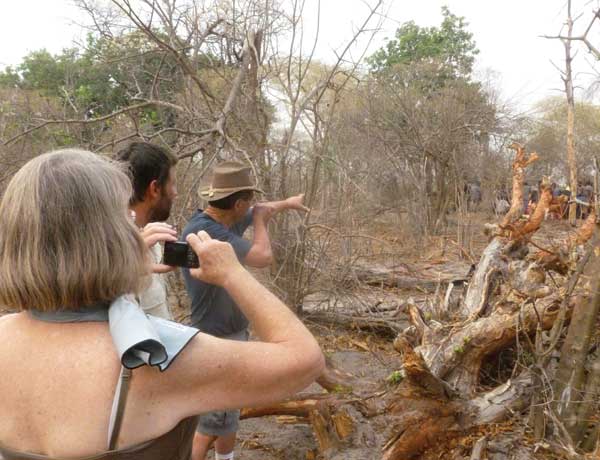
Leo describes how he took the shot
By now the carcass had been skinned by some local men. A crowd had gathered, the majority of which were male. Seeking refuge from the baking midday sun, we sat under a tree. “They’ve got a fire going”, said Jackie, pointing to a couple of men clearly anticipating a feast. Looking on as the number of villagers increased, I asked Leo how he would react to those who say his favourite pastime is not ‘sport’. “I suspect the people who say hunting isn’t a sport”, said Leo, “one, they have probably never hunted and two, they are probably football fans.” “American football?” I asked. “Any of the three! Rugby, soccer, or American football”, he replied. “To me, if you have referees blowing whistles it’s not a sport, it’s a game.” Away from such trivial matters, Leo preferred to focus on the importance of his actions, however defined, both in terms of conservation and rural livelihoods. “It looks like there’s two or three thousand pounds of meat lying there in that pile, and I think, in theory, it all gets distributed to the local people”, he told me. “And besides that, I’m sure the Safari Operator pays a big dollar for this and employs a bunch of people. I think a pretty good amount of the money that we’re spending here today stays right here in this Conservancy.”
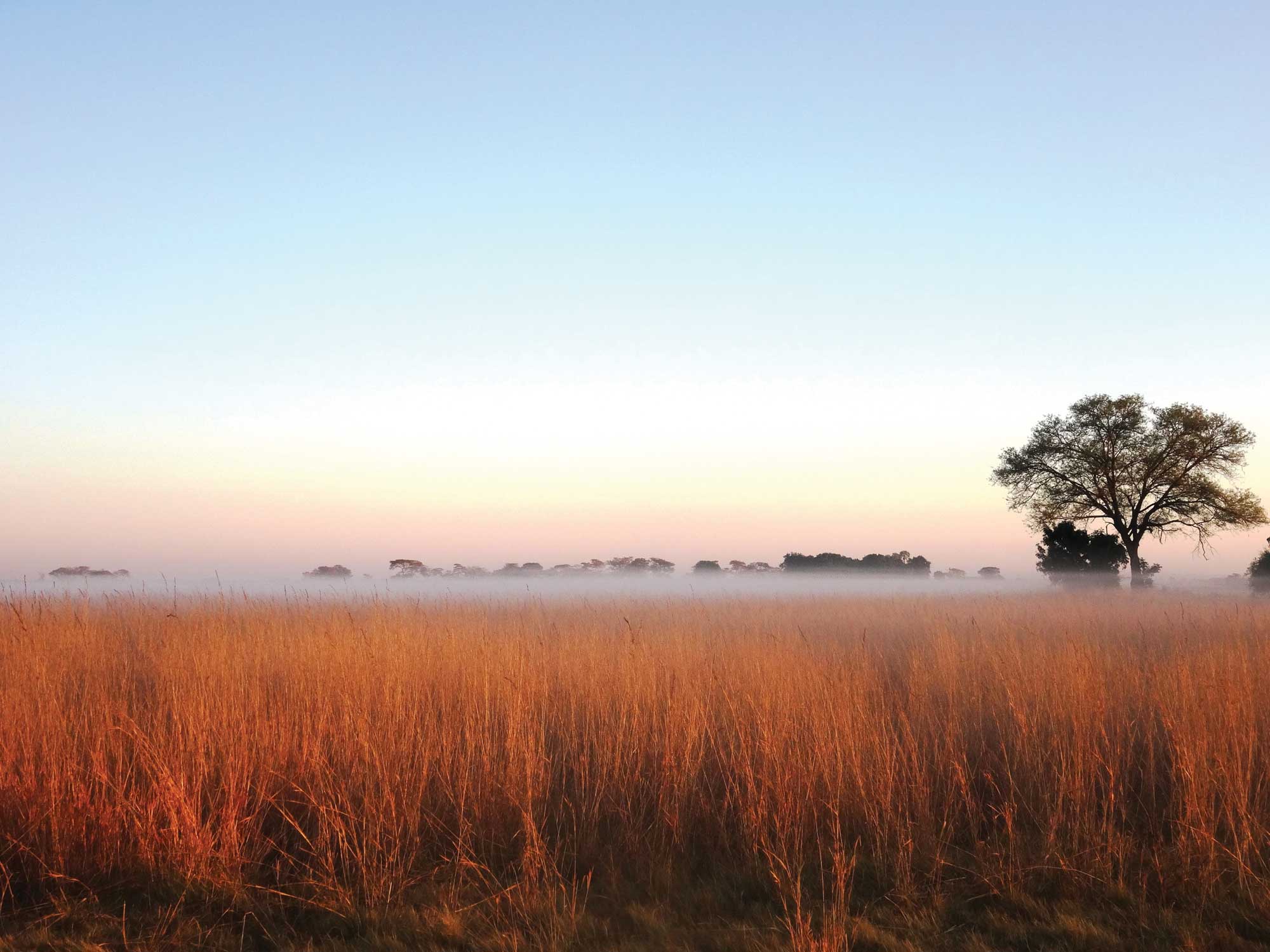
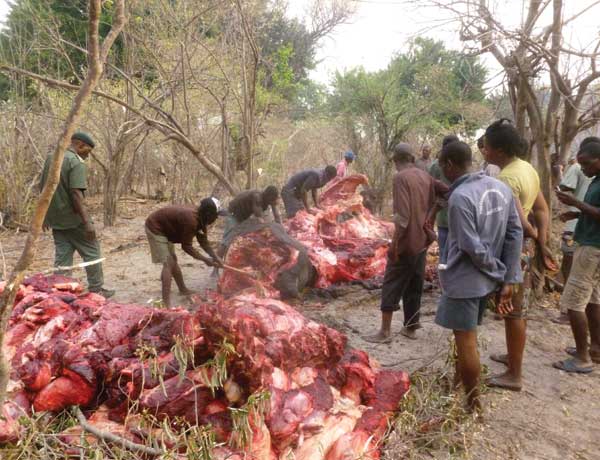
Frank (left) and villagers look on as the elephant is butchered
Although Leo was not entitled to take the ivory or any other part of the animal back home to the United States, an exception had been made for the elephant’s tail. “My understanding was that I was not allowed to take any part of the animal, it all belongs to the people”, Leo said. “But I was told today – whether it’s part of the regulations, the laws, or just a tradition – that the hunter gets to keep the tail.” Indeed, this is a cultural practice dating back to the late 1800s, a means by which hunters claimed ‘ownership’ of their quarry. Nowadays the tail hairs are often woven into bracelets which honour the elephant and signify the wearer as the individual who took the elephant. “Apparently they’ve found a local gentleman who has the necessary skill to weave those long, really neat hairs from the tail into elephant hair bracelets”, Leo continued. “So we’re going to employ him to make as many bracelets as he can”. “They will make great gifts for people back home”, said Jackie.

A villager leaves with some elephant meat
Arrangements were now being made to transport the meat back to the Conservancy office on the mainland. Frank directed operations, and many people made their own way off the island with their individual share. After a few hours of contemplation here at the place where he had hunted the elephant it was now also time for Leo to leave. His lifelong dream of hunting an African elephant had been fulfilled, and both the money and meat generated from his quarry would benefit many local people. I asked how he felt and whether he would be back here to hunt in the future. “I feel bad about killing an elephant”, he admitted. “A few years back I killed a leopard – the first dangerous game animal I ever killed. To me, that was the best hunt I’ve ever been on. And it’s so tempting to say ‘Boy, let’s go hunt leopard again!’ But the leopard I killed was a real trophy, it was a beautiful animal. I just find it hard to justify going and killing another one.” He paused. “It kind of makes it like, you know, maybe this is just something you shouldn’t do.” “What about another elephant?” I asked. “My thought was that I would only ever hunt elephant once”, he said. “But right now, I’m kind of thinking maybe I would do it again, maybe do a trophy hunt.”
This article was first published in the HUNTiNAMIBIA 2016 English edition.

